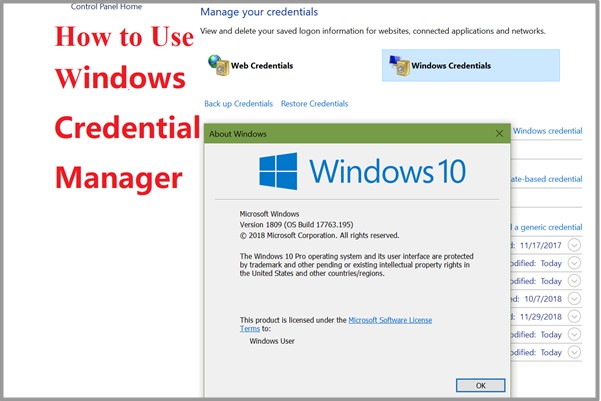

This utility works on any version of Windows, starting from Windows XP and up to Windows 10. You can use it to decrypt the Credentials data of your currently running system, as well as the Credentials data stored on external hard drive. VaultPasswordView - Decrypt Windows 10 Vault PasswordsĬredentialsFileView is a simple tool for Windows that decrypts and displays the passwords and other data stored inside Credentials files of Windows.This is especially useful for individuals and teams working on a shared network. If Windows Credentials are set up correctly, accessing shared folders on any computer on the same network is a breeze. Unlike Web Credentials, Windows Credentials are used only by Windows and its services to store login information. To permanently remove any credential, click on Remove. After clicking on any saved credential, you will see the stored information, including username, password, website URL, and which Microsoft product saved the password.Ĭlick on Show and verify your identity to check the saved password. To view the saved credentials, click on Web Credentials in Credential Manager. Instead, they will automatically fill in. By saving, you won't have to enter usernames and passwords again for websites. The Web Credentials store login information for portals and websites you connect to through Microsoft products, such as Internet Explorer and Microsoft Edge. Let's explore what information each credential saves and how you can manage your passwords for each category. The built-in Credential Manager in Windows can save two types of credentials: Web Credentials and Windows Credentials. The Types of Credentials Credential Manager Can Save


 0 kommentar(er)
0 kommentar(er)
